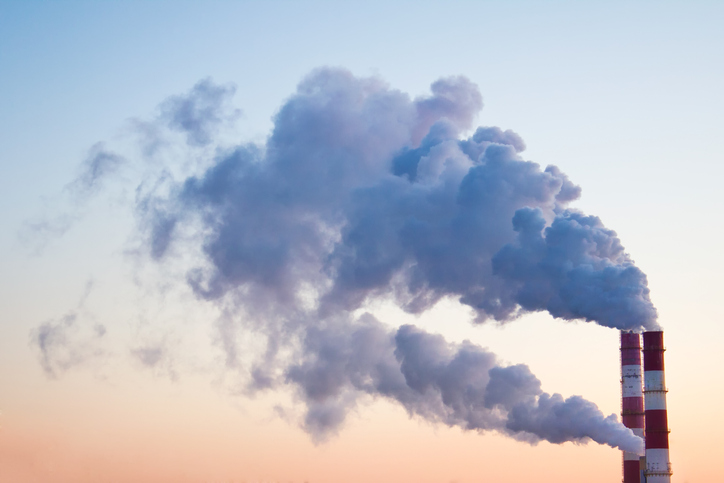Several states have implemented steps to build up legislative frameworks needed for carbon-capture utilization and sequestration (CCUS) projects in the first half of 2023.
CCUS refers to the process of capturing carbon-dioxide emissions from sources like coal-fired power plants, and either reuses or stores the CO2 so it will not enter the atmosphere. CO2 can also be captured directly from the atmosphere with the right technology. CCUS technologies also provide a foundation for carbon removal or “negative emissions” when the CO2 comes from bio-based processes or directly from the atmosphere.
Several reports on climate change indicate that CCUS technologies can help the world meet the lofty climate goals laid out in the Paris Agreement. The Intergovernmental Panel on Climate Change, for example, issued a report last year in which it expressed expectations that large-scale CCUS to be a key tool in the world’s utility belt to reduce emissions from industrial sources, while also offering storage options for negative emissions technologies.
Despite CCUS technology’s potential for effecting positive climate change, legislative frameworks to promote the development and usage of CCUS technologies are often still left up to local and state governments rather than through federal government projects. Some states more than others are taking it upon themselves to take steps to establish and outline the legal framework applicable to CCUS owners and operators.
Through July 2023, almost half of the U.S. states have enacted some form of CCUS legislation. While the legislation often differs from state to state, all of them have focused on legislation that does one of six things: (1) makes statutory clarifications of pore space ownership where the CO2 will be stored once captured, (2) provides mechanisms to combine ownership interests within a potential CO2 storage facility, (3) enacts long-term state stewardship programs, (4) establishes trust funds aimed at reducing or at least offsetting the various costs incurred by the state, (5) allows the states to assume UIC primary enforcement authority, or (6) includes CCUS plans in their published state climate action plans.
Here are just a few examples of how different states are accounting for the need for more CCUS efforts:
Colorado and Wyoming:
Last month at the annual meeting of the Western Governors’ Association, the governors from Colorado (Jared Polis) and Wyoming (Mark Gordon) jointly announced a memorandum of understanding to advance the direct air capture (DAC) industry across both their states. DAC is the branch of CCUS technology that aims to capture CO2 emissions directly from the atmosphere. The governors’ memorandum highlights both Colorado’s and Wyoming’s distinctive abilities to create a western DAC center. Their memorandum also promises that each state will collaborate on DAC-related funding award awards from the Department of Energy, on standards to measure CO2 storage, and identifying infrastructural needs for the DAC industry.
Louisiana:
Perhaps leading the way as one the most active states in the CCUS industry is Louisiana, which has had a busy 2023 in regard to establishing a comprehensive legislative framework for CCUS. Last month, the Environmental Protection Agency proposed to approve Louisiana’s application to assume primary enforcement authority for CCUS projects under the federal Underground Injection Control program. Barring opposition, if this proposal is approved it would allow Louisiana to fast-track approval of the more than 30 Class VI CCUS permit applications pending within the Bayou State. But beyond this, Louisiana also instituted multiple amendments to its statutory framework for CCUS, including (among other changes) requiring all Class VI permit applicants to submit an environmental analysis along with their application and creating new reporting requirements that CCUS owners or operators must abide by.
Texas:
Texas is also ramping up its CCUS efforts, given the fact there’s at least a half dozen coal-fired power stations operating within its borders. It created a trust fund aimed at offsetting some of the costs associated with its CCUS activities. Texas’ trust fund money will go toward funding the permitting, inspecting, reporting, and long-term monitoring of all CCUS facilities, as well as for training and enforcement activities. (Tex. Nat. Res. Code § 121.003; 16 Tex. Admin. Code § 5.205.)
We’ll update this post with significant future efforts by these or other states as they bulk up their legislative frameworks to foster additional CCUS projects.

